Back in November, I was trying to get a gigantic pile of snowflakes ready to be presented as gifts to friends and family. Nearly 200 snowflakes were ruined because I didn't notice the label on the glue.
I had used watered-down water soluble Elmer's School Glue for nearly 20 years, and I never had a problem with residue or discoloring. I did have the occasional rust stain, but that was caused by my pins, not by the glue. The last time I bought glue, I accidentally picked up Glue All, which is not water soluble and does not wash off. In addition, the formula had been strengthened, which wasn't what I needed. The residue on my snowflakes was unacceptable, as well as downright depressing.
I embarked upon one experiment after another to test every stiffening method I could. Meanwhile, I ordered calendars for Christmas gifts. There was no way I could make another 200 flakes in time to get them in the mail.
Readers of this blog, Snowflake CAL participants on Crochetville and Crochet Snowflakes group members on Ravelry were supportive and helpful. Crochetville and Ravelry are free, and I highly recommend both. Not only do you get access to patterns and people the world over who love your craft as much as you do, but you gain the wealth of knowledge and experience of others who've waded through the same challenges you have and a sounding board for questions and ideas. On both, you can see what others are working on and gain tons of inspiration. Both have threads reporting needlework sightings in news, movies and fashion shows. On Ravelry, you can look up any yarn and see what kinds of projects have been made with it. Ravelry also features special interest groups for everything under the sun. I’m an active participant in the monthly Starfleet Fiber Arts Corps challenges, which, among other fun benefits, motivates me to finish at least one WIP/UFO (work in progress/unfinished object) a month. For points!
It likely will be a cold day in a hot place before I fully trust commercial glue again, and you can be darn sure I look at labels much more carefully now. I've learned as much as I can about the methods others have successfully used in stiffening their snowflakes and doilies.
As previously reported here, I did not like hairspray at all. It does not stiffen adequately, and it stinks to high heaven, even if it's labeled as unscented. Free can, barely used, to good home...
Spray starch and a hot iron were the first alternative I tried, mostly because I had what I needed on hand and didn't have to go shopping. I vaguely remember my grandmother doing this with doilies, and it works well for that. I blocked and pinned a few snowflakes, sprayed them with the starch and allowed them to dry, which doesn’t take nearly as long as other methods, sometimes less than two hours.
After unpinning, I lightly sprayed the snowflakes again, over a clean towel on the ironing board, then pressed with the iron set to cotton. I scorched a couple of the first round flakes because I was too aggressive and unaware it could happen. I had to readjust my quilting thinking and not put the same elbow grease into pressing snowflakes that I use when pressing seams.
This method is perfectly acceptable for small flakes. In my opinion, it is not strong enough for large or heavy flakes. Although the large snowflakes held their shape beautifully, they are somewhat droopy on the tree due to weight.
My new favorite method is bottled starch, which is relatively inexpensive and comes in a big jug sure to last a good, long time. I used the same technique I’ve used with glue, minus the watering down step. I pinned my snowflakes (using stainless steel pins), painted the starch on with an artist's paint brush, allowed to dry overnight, removed pins and hung. I have not tried applying glitter with the starch, so I don’t know yet if it will stick. The snowflakes stiffened using this method are suitable for hanging on the window or on the tree, as well as gift giving. However, the snowflakes were not strong enough to hold the weight of danglies, and this method is not quite strong enough for the El Diente Snowflake. I even tried double applications, but the upper arms of the flake are just too heavy and too long.
I had used Epsom salts many years ago, but it's been so long, I had to look up the (super easy) recipe. Heat 1 cup water, add 1 cup Epsom salts, mix thoroughly until fully dissolved. Taking care not to burn fingers, immerse snowflakes in mixture (one by one; don't do a bunch at a time) and pin. This method hardens extremely fast, and is great if you need a snowflake right away. Some snowflakers on Ravelry said they had trouble getting their snowflakes pinned fast enough because they harden so quickly. If that happens, just immerse the snowflake again and start over. If your mixture begins to develop a crust on top, just pop it in the microwave another 30 seconds, and then be careful, again, not to burn your fingers when immersing.
I sprinkled my snowflakes with Epsom salt crystals immediately after pinning, and I like the course glittery effect. This method stiffens adequately but makes the snowflakes much thicker and heavier than any other method, to the point of delicacy being lost. Another word of warning: This method seems to make hand-dyed thread run and dulls solid colors. The nice thing is it does wash out if you want or need to restiffen. If you use one of Dr. Teal's fragrant salts, the snowflakes smell wonderful. Then just pour the leftover solution into a tub full of hot water, slip in, relax and try not to fall asleep.
Rav member CamC shared her recipe for homemade cornstarch glue, which is to cook and stir 1/4 cup cornstarch/cornflour and 1 cup water until it boils and becomes clear rather than cloudy. Let it cool. The mix can be kept in the fridge for up to a week, if stored in an airtight container, according to CamC.
Dampen snowflakes and wring. Massage the glue into the snowflakes. CamC says if the mixture clogs the lace, the glue is too thick and should be thinned carefully with warm water, whisking until smooth. Once you’ve thoroughly worked the glue into your snowflake, pin the flake onto a blocking board. Let the snowflake dry in a warm place. CamC says a hair dryer helps speed the process, but it will still take a couple of days.
I was anxious and removed the snowflakes too early. The arms of the snowflakes were fine, but the centers, which had denser stitching, were still slightly damp. The centers didn't dry flat because I didn't re-pin them. If you notice your unpinned flakes still have any moisture in them, laying them on a flat surface is not sufficient for drying if you want them to be perfectly shaped.
However, once dry, the cornstarch-stiffened snowflakes feel bombproof.
"This is a stiff mixture," CamC instructed. "You can practically pound nails with the finished product. But, unlike white glue, you also can wash the starch out if the item becomes soiled, cook up a new batch, and stiffen again. Cornstarch-stiffened snowflakes won’t get limp in humidity the way sugar/water does."
Remember, she says, the starch can scorch while cooking; don't leave the mixture unattended while cooking, and continually stir. Always use rustproof pins. Stretch your work evenly so it's not lopsided when it dries; it does need to be pinned.
One of the things I noticed when I first tried this method is the cornstarch mixture isn’t as icky on my fingers as glue. I'm 100% girly girl when it comes to getting dirt beneath my fingernails, and I always hated pinning snowflakes with glue already on them. That's one of the reasons I used a paintbrush to apply the glue. I can get the cornstarch glue all over my hands and keep working. Cleaner-feeling hands is one of my favorite benefits of this method.
I cut CamC's recipe in half my first try, and I used a microwave instead of the stove top. I used a couple of scant (not heaping) tablespoons of cornstarch mixed into half a cup of cold water (cornstarch is less lumpy if you add it while the water is still cold), then heated in the microwave in 10-second intervals with lots of whisking in between. I wouldn't recommend the microwave method for people who ruin homemade microwave gravy regularly, but if you have lots of microwave experience and time to spend carefully watching the mixture without getting sidetracked, the microwave can work and will speed the cooking process a bit.
I stirred in a couple of drops of rosemary oil after cooking, which is said to prevent mold, but this is my first time ever using this method, so I cannot speak to the long-term quality of cornstarch. This will be a long-term experiment. Hopefully by Christmas I'll have a little more real-life experience beneath my belt.
In the meantime, I used a CLEAN spice bottle to store my leftovers in the fridge. If your spice smells wonderful, maybe you don't need to clean all the spice out of it, but garlic certainly would not be my ideal Christmas scent.
I'm still working off that initial batch of cornstarch glue I made nearly three weeks ago, so in my personal experience, homemade glue can last more than a week. It's rather lumpy when I take it out of the fridge, so I remove the cap and heat the bottle in the microwave for about ten seconds, stir, add water if needed.
Not everyone has had successful results with cornstarch.
Ane Scherrer said her cornstarch-stiffened snowflakes yellowed after a season of storage in a metal container. She washed the flakes and reapplied fresh homemade cornstarch glue, and the flakes yellowed again. So she uses only laundry starch now. In talking about the problem, we decided metal might be contributing to the yellowing, so I would advise against storing snowflakes in anything metal.
I have had success using Mod Podge as stiffener. However, snowflakes stiffened with it will warp if displayed in a window for prolonged periods. The misshaped snowflakes can be flattened, but it takes time. After trying every method of glue removal I could think of, I tried saving a few of my ruined snowflakes by applying a coat of Mod Podge on top of glue, but the gunkiness looks even worse. I hate doing it, but I think some of my ruined snowflakes will be destined for the circular file if I can't think of an appropriate way to use them.
While we're on the subject of window snowflake display, colored snowflakes should not be displayed in a window where they receive prolonged exposure to sun, unless you want them to be pastel and eventually white. Colored snowflakes will sun bleach.
Stiffened snowflakes, regardless of stiffening method used, are subject to humidity. Do not leave them out all year if you live in a humid environment. Storing them in airtight containers is imperative if you live in a humid environment, including running a swamp air conditioner all summer long. This also applies if the snowflakes are openly exposed to a kitchen where a lot of water is boiled. My climate is not typically humid, but I have humidifiers for my indoor plants, and the mist does a real bang-up job on my snowflakes.
A few years ago, I washed two school glue-stiffened snowflakes in the washing machine with my whites. I'd placed them on gift packages, and they were inadvertently dropped on the muddy, icy street and run over by cars during a winter storm. The recipients never inquired whether the snowflakes were successfully reborn, so they are members of my collection. After a round of fresh stiffening, my adopted adult snowflakes look gorgeous on my tree and show no signs of the abuse and neglect they endured as children.
Many crocheters have asked how I store my snowflakes. For years, I stored them improperly and had to reshape them every season. They were stacked with no regard to size and placed on the top shelf of my closet, where tiny peanut butter and jelly-covered hands could not reach them. I also didn't want the snowflakes to be used as Frisbees or floated down a river just to see if they'd sink. I had to reshape the snowflakes each year, and sometimes they needed to be cleaned even though muddy, soiled little fingers never touched them.
When my nest emptied, I found myself with more time and a tiny bit more money and space for proper snowflake storage. I've decided proper storage is worth the investment. It’s so wonderful to be able to pull the snowflakes out in October and November and not have to reshape them or clean dust off them.
I store my own hand-dyed snowflakes in sealable bags, which then are stored in airtight containers normally used for food leftovers. I don't completely trust my color-fasting because I'm still a toddler in the hand-dyeing process. I don't want my beautiful turquoise snowflakes rubbing off on my white snowflakes.
Snowflakes made of thread not colored by me don't get the plastic bag treatment, and so far, my snowflakes have been safe. However, the gorgeous blue and white thread I used for the Mount Sneffels Snowflake was purchased on eBay, and when I stiffened the snowflakes (with homemade cornstarch glue), the turquoise ran like crazy. Those snowflakes will be stored individually in their own bags.
I store my snowflakes biggest on the bottom, smallest on the top, like the donut rings we used to play with as babies. I learned from experience, the hard way, of course, when snowflakes drape over a surface, including a smaller flake underneath, that's the shape they will retain.
The El Diente Snowflakes are too big for any of the plastic containers I've found, so I keep them in large gallon bags, sealed, and then inside a clean pizza box. The Lanterne Rouge, Antero Jewel Box, Christmas Bells and St. Elmo Pomander each get their own plastic container now because I found perfectly sized units for each. I have to reshape the Mod Podge-stiffened Jewel Box legs each time I take it back out of storage, but the box will bear weight for a few weeks before the legs go flat again.
This has been a long post, but I hope by sharing my experience, other snowflakers will not have to endure the loss of precious snowflakes.
I had a request last month for more small snowflakes, and this is one of six results so far. Sometimes I leave little notes on the patterns so I can remember which snowflakes go with which directions. This one said "sixtopus." When I finalized the pattern, I thought the note name was cute and unique enough to keep instead of naming the snowflake after a mountain.
You may do whatever you'd like with snowflakes you make from this pattern, but you may not sell or republish the pattern. Thanks, and enjoy!
Finished Size: 3 inches from point to point
Materials: Size 10 crochet thread, size 8 crochet hook, empty pizza box, wax paper or plastic wrap, cellophane tape, water soluble school glue and water (or desired stiffener), glitter, small container for glue/water mixture, paintbrush, stick pins that won't be used later for sewing, clear thread or fishing line
Note: I also made snowflakes with size 20 thread with a size 12 crochet hook and size 40 thread with a size 14 crochet hook.
Sixtopus Snowflake Instructions
Make magic ring.
Round 1: Ch 2 (counts as 1 dc), 1 dc in ring, ch 3, *2 dc in ring, ch 3; repeat from * 4 times; sl st in 2nd ch of starting ch 2. Pull magic ring tight.
Round 2: *2 sc in next ch 3 sp, ch 10, 1 sc in 3rd ch from hook, 1 hdc in next ch, 1 dc in each of next 3 ch, 1 hdc in next ch, 1 sc in next ch, ch 1, 2 sc in same sp, ch 6, 1 sc in 2nd ch from hook, 1 hdc in next ch, 1 dc in next ch, ch 2, 2 sc in next ch 3 sp; repeat from * around 5 times, ending with ch 2 on final repeat; sl st in top of joining dc of Round 1; bind off. Weave in ends.
If you're not reading this pattern on Snowcatcher, you're not reading the designer's blog. Please go here to see the original.
Finish: Tape wax paper or plastic wrap to top of empty pizza box. Pin snowflake to box on top of wax paper or plastic wrap.
Mix a few drops of water with a teaspoon of glue in small washable container. Paint snowflake with glue mixture or desired stiffener. Sprinkle lightly with glitter. Wash paintbrush and container thoroughly. Allow snowflake to dry at least 24 hours. Remove pins. Gently peel snowflake from wax paper or plastic wrap. Attach 10-inch clear thread to one spoke, weaving in end. Wrap fishing line around tree branch (or tape to ceiling or any overhead surface) and watch the snowflake twirl freely whenever you walk by! Snowflake also may be taped to window or tied to doorknob or cabinet handle.






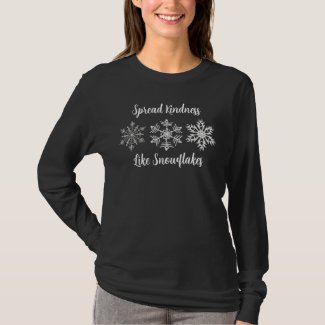
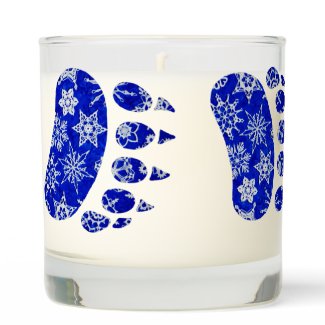
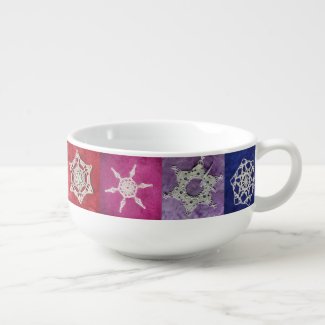

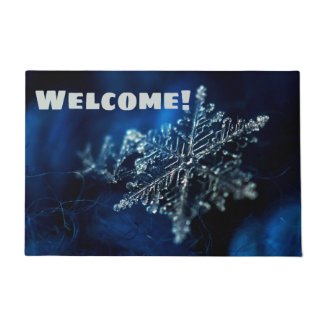
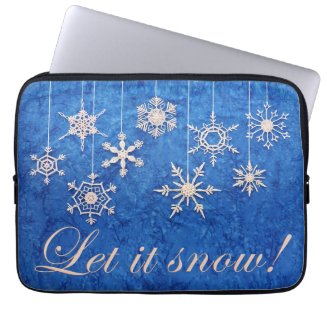
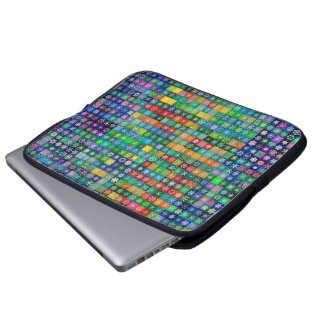
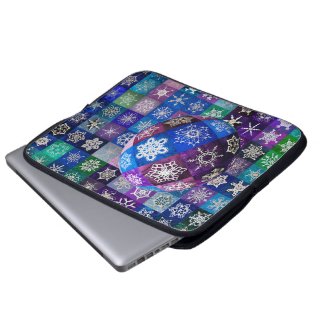















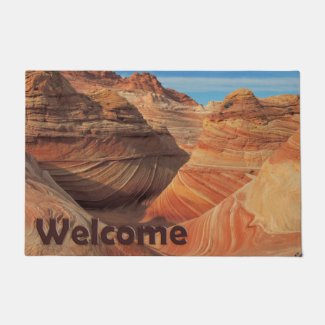
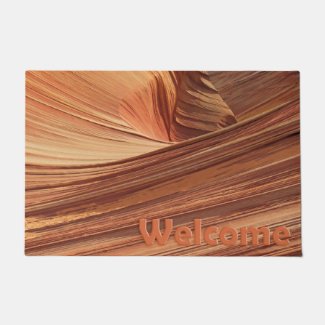

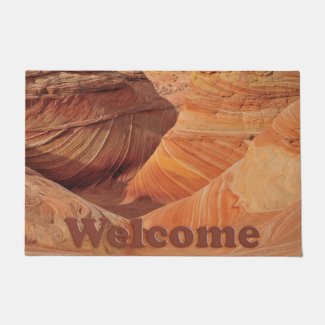
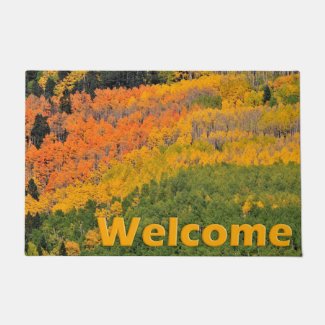
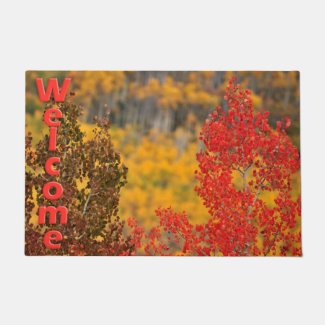
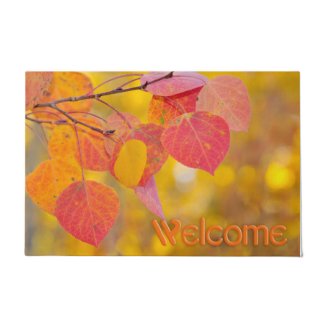
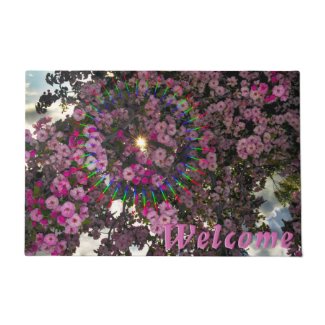
Dear friend!
ReplyDeleteThis is not a post. This is a scientific article!!! Thank you! Brazilian kisses...
A LOT of snowflakes...!
ReplyDeleteTotally worth reading all the way through dear! Thank you so much for sharing your experiences with the glues. I've used a cornstarch recipe for making paste papers that I love, so I think I'll probably go that route. I'm getting ready to teach a mixed media class to 6-8th grade girls, so that made me think of a solution for you for your ruined ones. If you do any type of mixed media at all, snipping pieces of the snowflakes to use as adornments on collages, memory boxes, even jewelry would be a wonderful way to salvage your beautiful designs! And I just love the sixtopus. So very cute!!
ReplyDeleteI have saved all this info for myself to try and/or learn from. Also, sent your blog onto those that have bought my snowflakes or been given as a gift so they too know how to store. And any future gifts/sales will receive this info.
ReplyDeleteAlso, I found this blog entry that you might enjoy. Thought of you because it includes crocheting around bicycle spokes!! http://armygurumi.blogspot.com/2011/09/ideas-crochet-bici-tuning.html
Once upon a time, the Goatmother bought a beautiful crocheted fan that had been stiffened with sugar water. It worked very well until she walked in one day to find the entire fan covered with ants! Oy.
ReplyDeleteIn know know why my doily warped. will wash and re stiffen with cornstarch.
ReplyDeleteLove you!
Wow, that was very interesting! Such a lot of work, but good info to know.
ReplyDeleteI've been crocheting snowflakes for nearly thirty years, and never used any of the methods mentioned. I've always used Alene's stiffener, purchased at our local craft store, and have never had a single problem with it (except for the occasional rust from pins you talked about). In fact, last summer I found a couple dozen snowflakes that I made more than ten years ago for a holiday bazaar, and they were like new. In my personal collection, the only way you can tell my old ones from newer ones is that the recent ones are made with sparkly thread. I wrap each one in tissue paper and store them in a contact-paper-covered cardboard box. Oh, I live in the Puget Sound area, so we do have humidity/mildew issues here, but not with my snowflakes!
Just love your patterns, they're the first things I look for on Ravelry.
My stars / flakes (all about 7-10 years old) live in a metal tin from January to November. They've never discoloured - guess I got lucky. I can't for the life of me remember how they were all stiffened - I think some were glue&water (brushed on for the very same reasons you mentioned) and some may have been sugar water.
ReplyDeleteGreat post! I like the cornstarch idea. And of course the snowflake. :)
Thank you so much for compiling all of this information in one place. Gifts of snowflake patterns, beautiful photos and now valuable information. So thankful for folks like you who do it just for the love of the art and not for personal gain.
ReplyDeleteI have a little crocheted angel Christmas ornament that my aunt made and stiffened with sugar water. That was at least 25 years ago and it still looks nice.There were several of these originally but several were ruined by a cat that had a taste for sugar. One left. I will try to remember to take a photo next CChristmas and post it on Macro Monday.
ReplyDeleteIf there be such a thing as the American Snowflake Journal, this piece could be its founding father.
ReplyDeleteI learn more from reading a single post of yours than I do from most books.
What is the name of the flake at the top of your post? I couldn't find it your snowflake directory although it looks like it might be a variation of Torreys Peak. Would like to print a copy of the one shown in this post.
ReplyDeleteThank you, Everyone! I'm so glad everyone is sharing their own experiences so we can learn all we can.
ReplyDeleteShirley, I LOVE your idea and can't wait to try it! Thank you for the suggestion!
Brenda, I LOVED those bicycle skirt guards. I've been wanting to make one for what feels like a century now, but my bike doesn't have the splash guards, so I don't have anything to hook them to. :(
Marigold, that's precisely one of the reasons I will not use my grandmother's method of sugar/water.
Lynnedee, it's really good to hear your flakes have stood the test of time. I've actually used Alene's once; I was intimidated by the small size of the bottle. I couldn't get a whole batch of snowflakes out of it! But you are correct. It does work and last.
GW, I will try to remember to remind you I want to see your crocheted angel ornament next December!
Darlene, viewing your comment from my phone, I initially thought you meant the Mount Sneffels Snowflake from last week in my blog header right now. I haven't had a chance to add it to the directory yet. I get a little behind on that sometimes because manual coding and alphabetizing is such a bear in HTML. But you are correct; good eye. It indeed is the Torreys Peak snowflake, just different colors, no modifications at all.
Liquid fabric stiffener such as Plaid brand's 'stiffy' works really well for this. It's best to drench the item as much as possible though to get it to thoroughly harden well.
ReplyDeleteThanks, Busybee! I have used Stiffy on occasion. I've been using liquid starch on most of my snowflakes for the last couple of years, and I like that method second best to homemade starch.
Delete